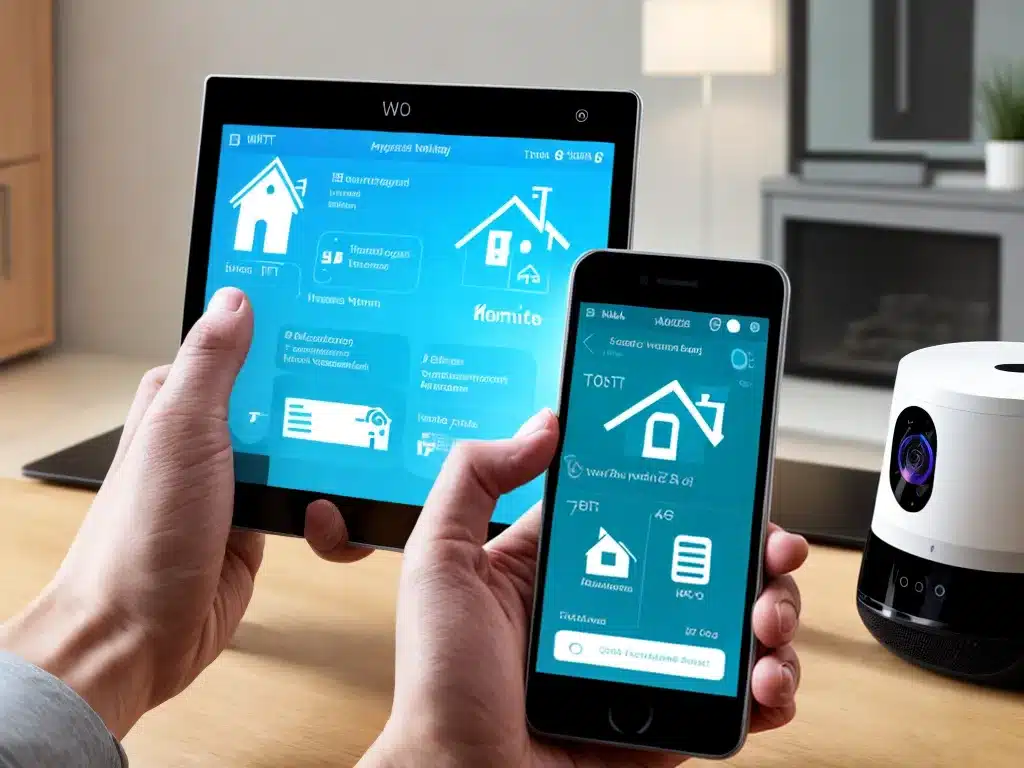
IoT in the Home: The Latest Smart Home Trends
The Internet of Things (IoT) has transformed homes around the world, allowing people to connect and control devices through the internet. As smart home technology advances, new IoT trends continue emerging that make homes safer, more efficient, and more convenient. Here are some of the latest and most exciting IoT trends for smart homes.
Voice Assistants
Voice assistants like Amazon Alexa, Google Assistant, and Apple Siri have exploded in popularity. These virtual assistants allow me to use voice commands to control smart devices and access information. With a simple voice command, I can turn on lights, adjust the thermostat, play music, get news updates, and more. Voice assistants are getting smarter every year as companies improve natural language processing.
Key players like Amazon and Google are making big investments to expand the capabilities of their voice assistants. They are also working to integrate them into more third-party smart home devices. As this integration expands, I’ll be able to control more of my home with simple voice commands.
Smart Appliances
Major home appliances like refrigerators, ovens, washers and dryers are gaining smart capabilities. These smart appliances can connect to the internet and be controlled remotely via smartphone apps.
For example, I can use an app to preheat my smart oven from the grocery store on the way home. Or I can get notifications on my phone when the laundry is done. Smart appliances bring more convenience to daily household chores.
Key players in this space include Samsung, LG, GE, and Whirlpool who are adding advanced computers and sensors to make appliances more energy-efficient, self-maintaining, and user-friendly. As more households adopt smart appliances, I expect capabilities like voice control integration will also expand.
Robot Vacuums
Robot vacuums have also gone mainstream thanks to affordable options from companies like iRobot, Eufy, and Shark. These robotic cleaners can autonomously map floors, navigate around furniture, and clean carpets and hard floors when I’m not home.
New robot vacuums have stronger suction, better navigation, and the ability to empty themselves by returning to a base station. With some models, I can even use a smartphone to remotely control or schedule the vacuum. Robot vacuums save me time on a tedious chore.
Smart Lighting
Smart lighting systems are easy to set up and provide so much convenience. I can install smart light bulbs like Philips Hue and control them from an app or voice assistant. Or I can install smart switches like Lutron Caseta to bring automation to regular light fixtures.
These smart lighting systems allow me to set schedules, automate routines, and control lights remotely. I can even set lights to mimic occupancy when I’m away or integrate lighting into home entertainment scenes. Energy-efficient LED bulbs help cut electricity costs. Smart lighting gives me granular control over my home’s lighting for comfort, convenience and savings.
Home Security Systems
IoT-enabled home security systems give me 24/7 monitoring, intelligent alerts and smart features like facial recognition. Providers like Vivint, ADT, and SimpliSafe offer DIY installation of sensors, cameras, door locks and more.
I can check security feeds on my phone and get alerts for snooping motion or suspicious activity. Systems can also integrate with other smart devices, turning on lights when motion is detected or adjusting the thermostat when I leave.
These intelligent security systems bring next-level monitoring and protection to households. As cameras, sensors and AI get more advanced, so will the capabilities of smart security systems.
Energy Monitoring and Management
Smart thermostats like the Nest Learning Thermostat already allow remote temperature control and integration with other smart devices. Now home energy monitoring systems like Sense and Neurio give me visibility into my home’s energy usage and patterns.
These systems use a central hub along with sensors and smart outlets to track energy usage appliance-by-appliance in real-time. I can identify wasteful devices that are driving up costs and even automate controls based on energy usage. Home energy management helps me save money and reduce my environmental impact.
Smart thermostats and energy monitors are just the beginning. I expect more holistic home energy management systems to emerge as homes get smarter.
The IoT smart home revolution is just getting started. As technology improves and more manufacturers get onboard, smart home capabilities will grow by leaps and bounds. I look forward to the convenience, efficiency, and peace of mind these innovations will bring to my daily life. The futures is bright for IoT in the home.












